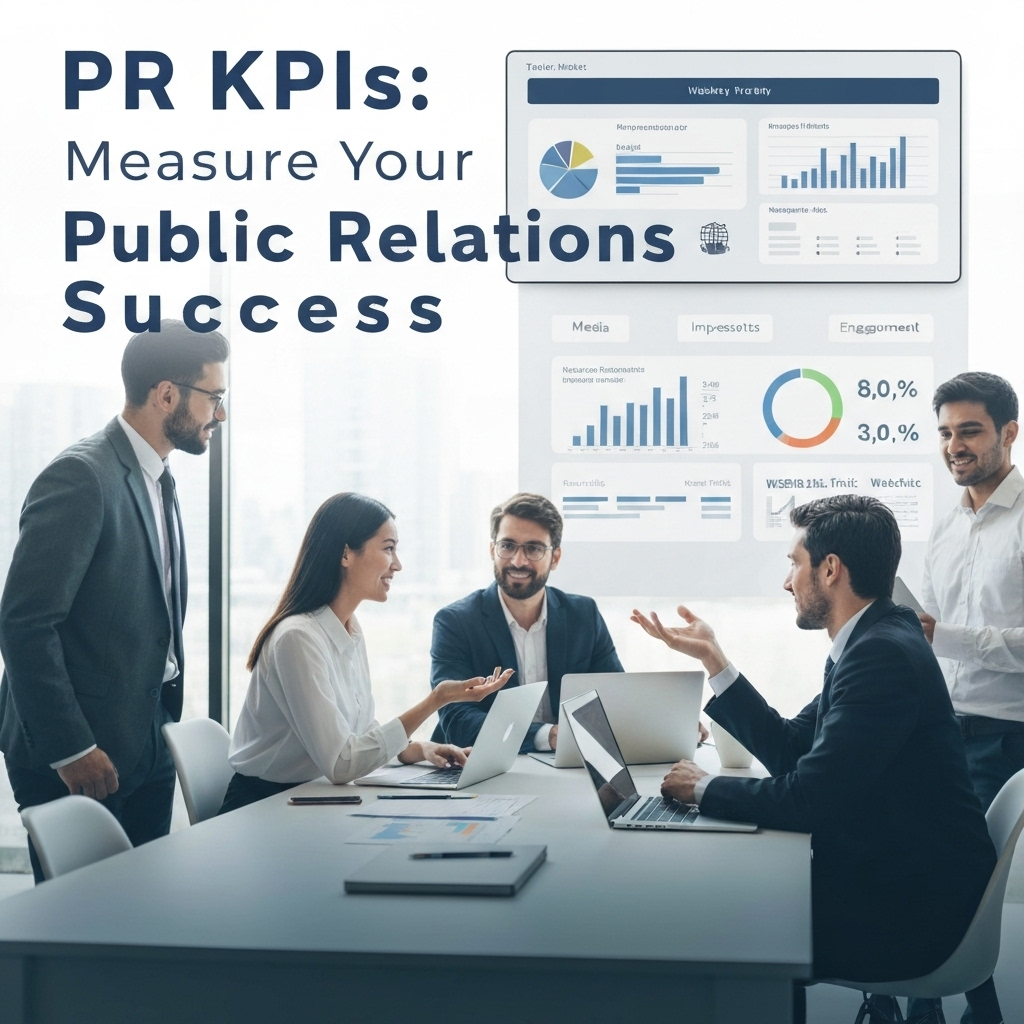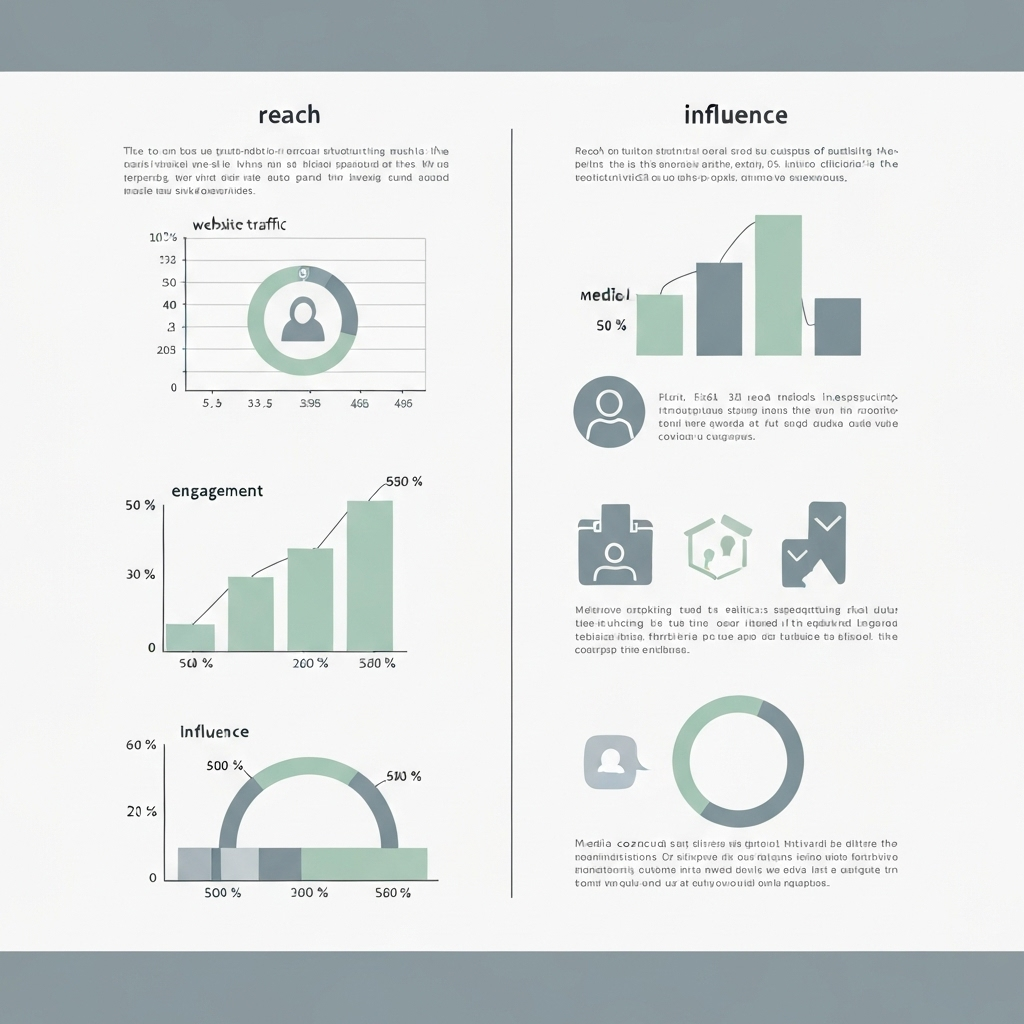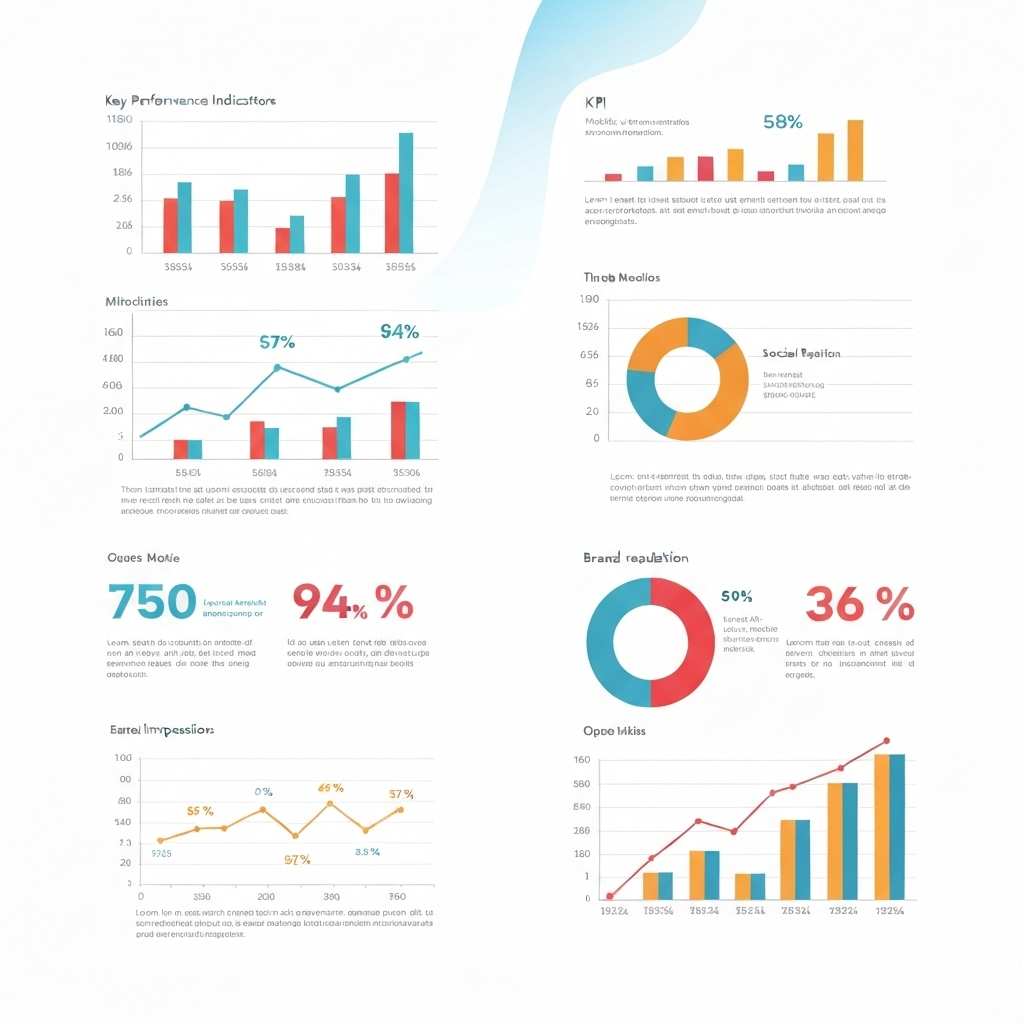PR KPIs: Measure Your Public Relations Success

In the dynamic world of public relations, proving your value has never been more critical. Gone are the days when PR success was measured solely by the number of press clippings or media mentions. Today's leaders demand data-driven insights, tangible results, and a clear understanding of how PR efforts contribute to the bottom line. This shift necessitates a robust framework for measuring PR performance, moving beyond vanity metrics to focus on key performance indicators (KPIs) that truly demonstrate impact. Mastering these kpis for public relations is no longer optional; it's essential for strategic leadership, campaign optimization, and securing future investment.
The Importance of KPIs in Modern PR for Data-Driven Leaders
Public relations is often perceived as a qualitative discipline, making it challenging to quantify its impact. However, the modern business environment, driven by data and accountability, requires PR professionals to speak the language of numbers. Key Performance Indicators (KPIs) are the bridge between PR activities and business objectives. They provide a measurable way to track progress, identify what's working (and what isn't), and ultimately, demonstrate the return on investment (ROI) in public relations. For data-driven leaders, understanding and leveraging these metrics allows for informed decision-making, agile campaign adjustments, and a clear articulation of PR's strategic contribution to organizational goals.
Without clear KPIs, PR departments risk operating in a vacuum, unable to justify their budgets or prove their effectiveness to stakeholders. This can lead to underfunding, misallocation of resources, and a disconnect between PR initiatives and overarching business strategy. By establishing and consistently tracking relevant PR metrics, PR teams can transform from cost centers into value drivers, aligning their efforts with sales, marketing, and overall business growth. This article will guide you through identifying, measuring, and utilizing these crucial indicators to enhance your PR strategy and demonstrate measurable success.
Why Traditional PR Metrics Fall Short for Today's Leaders
Historically, PR success was often gauged by metrics like the number of media placements, the size of the publication, or the estimated reach based on circulation numbers. While these metrics offer a baseline understanding of visibility, they fail to capture the nuanced impact of PR campaigns in today's complex media landscape. Leaders are looking for more than just exposure; they want to understand how PR influences perception, drives engagement, builds reputation, and ultimately, impacts business outcomes.
Consider these limitations of traditional metrics:
- Media Mentions (Clippings): A mention in a publication doesn't guarantee positive sentiment or that the message resonated with the target audience. A negative mention could be more damaging than beneficial.
- Impressions/Reach: While indicative of potential visibility, impressions don't measure actual consumption or impact. Seeing a brand's name 100,000 times doesn't mean anyone paid attention or acted upon it. It's a broad measure of potential, not guaranteed engagement.
- Advertising Value Equivalency (AVE): This metric attempts to assign a monetary value to earned media by comparing it to paid advertising rates. However, AVE is widely criticized by PR professionals and industry bodies because it equates earned media (which has credibility) with paid advertising (which is often viewed with skepticism) and doesn't account for message accuracy or impact.
These traditional measures are often superficial and don't provide the depth needed for strategic decision-making. Today's leaders require public relations analytics that delve deeper into audience response, sentiment, message penetration, and the ultimate business impact of PR activities. The focus has shifted from simply 'getting noticed' to 'making a difference'. As one source aptly puts it, "To truly measure performance and impact, it's important to focus on the KPIs that offer real insight into PR outcomes."
Key Performance Indicators (KPIs) for Public Relations: A Practical Guide
To effectively measure PR success and demonstrate its value, a strategic approach to selecting and tracking KPIs is essential. These indicators should align with specific campaign objectives and broader business goals. We can categorize PR KPIs into several key areas, as highlighted by industry experts who emphasize tracking metrics that offer real insight.
1. Measuring Reach and Awareness: Beyond Impressions
While impressions are a starting point, more sophisticated metrics are needed to understand true reach and awareness. These KPIs help gauge how widely your message is spreading and how visible your brand is within your target markets. As Plecto notes, "begin by analyzing your media coverage and media impressions," but then move beyond this.
- Share of Voice (SOV): This measures your brand's visibility in the media compared to your competitors. It's calculated by tracking mentions of your brand versus mentions of your key competitors within a defined period and topic. A higher SOV indicates greater brand prominence. For example, if your industry sees 100 total mentions of key players, and your brand gets 30, your SOV is 30%.
- Media Placement Quality: This goes beyond just counting placements. It assesses the relevance of the publication, the prominence of the mention (e.g., front page vs. buried inside), the sentiment of the coverage, and whether key messages were included. A single high-quality placement in a Tier-1 publication can be more valuable than multiple low-quality mentions.
- Website Traffic from PR Efforts: Track how many visitors arrive at your website directly from media mentions or PR-driven campaigns. This can be done using UTM parameters in links placed in online articles or by monitoring referral traffic in web analytics tools.
- Brand Mentions Volume: While not solely indicative of success, a consistent increase in brand mentions across relevant channels, especially when correlated with positive sentiment, signals growing awareness.
- Potential Reach: This metric, as identified by Meltwater, considers the audience size of the media outlets that cover your brand, offering a more refined view of potential exposure than raw impressions.
Tracking these metrics helps understand how effectively PR is cutting through the noise and establishing brand presence. It’s about measuring the *quality* and *context* of the visibility, not just the quantity.
2. Assessing Engagement and Sentiment: What Your Audience Really Thinks
Awareness is crucial, but understanding how your audience perceives and interacts with your brand is where PR truly shines. These KPIs measure the quality of the conversation and the emotional response to your brand and its messaging.
- Sentiment Analysis: This involves analyzing media coverage and social media conversations to determine the tone (positive, negative, or neutral) associated with your brand. Advanced tools can provide nuanced insights into public perception. For instance, identifying a trend of negative sentiment around a specific product launch can alert PR teams to address misinformation or reputational issues proactively.
- Social Media Engagement: Track likes, shares, comments, and retweets on content related to your PR activities. High engagement suggests that your message is resonating with the audience and encouraging interaction. This is a direct measure of how well your content is connecting.
- Message Penetration: This measures whether your key messages are being accurately communicated in media coverage and understood by the target audience. It often requires surveys or qualitative analysis of coverage. For example, if your key message was about innovation, are journalists and readers referencing innovation when discussing your company?
- Audience Engagement Rate: For content directly published or amplified by PR (e.g., blog posts, press releases on owned channels), track engagement rates (comments, shares, time on page) to understand how well the content is performing.
- Customer Satisfaction: As highlighted by PRLab, customer satisfaction is a critical metric, measuring how well your product or service is working and generating loyalty. PR efforts that enhance brand trust and positive perception can directly influence this.
These metrics provide a deeper understanding of audience perception and interaction, moving beyond simple visibility to measure resonance and influence. They help in refining messaging and identifying areas for improvement in communication strategy.
3. Quantifying Business Impact: Linking PR to Revenue and Goals
This is arguably the most critical category for demonstrating PR's value to leadership. These KPIs directly connect PR activities to business objectives, such as lead generation, sales, customer acquisition, and brand reputation, thereby proving the ROI in public relations.
- Lead Generation: Track the number of leads generated directly or indirectly from PR activities. This could be through calls-to-action in press releases, mentions in articles that drive traffic to lead capture pages, or event participation amplified by PR.
- Customer Acquisition Cost (CAC) Reduction: PR can support marketing efforts by building brand credibility and awareness, potentially lowering the cost of acquiring new customers compared to purely paid channels. Measuring this requires careful attribution modeling.
- Website Conversion Rates: If PR efforts drive traffic to your website, monitor how these visitors convert (e.g., sign-ups, downloads, purchases). A lift in conversion rates from PR-referred traffic indicates that PR is influencing purchasing decisions.
- Customer Lifetime Value (CLV): Positive brand perception and reputation built through PR can foster customer loyalty, which in turn increases CLV. While harder to directly attribute, PR plays a role in long-term brand equity and customer retention.
- Brand Reputation Scores: Regularly survey target audiences or use third-party tools to measure changes in brand reputation over time. Improvements in reputation scores, correlated with PR activities, can be a powerful indicator of success.
- Sales Revenue Influenced by PR: This is the ultimate goal for many businesses. By using attribution models (e.g., last-touch, first-touch, or multi-touch) that incorporate PR touchpoints, you can estimate the revenue influenced by PR campaigns. For instance, if a key industry report cited by PR efforts precedes a significant sales spike, that's a strong indicator.
Connecting PR to these business outcomes requires close collaboration with sales and marketing teams and sophisticated tracking mechanisms. It's about showing how PR contributes to the company's financial health and strategic objectives.
Tools and Technologies for Tracking PR KPIs (Including Email Productivity Solutions)
Effectively tracking PR performance indicators requires the right tools. A robust technology stack can automate data collection, provide in-depth analysis, and streamline reporting, freeing up PR professionals to focus on strategy and execution. These tools can range from media monitoring platforms to advanced analytics suites and even solutions that enhance daily operational efficiency.
- Media Monitoring & Analysis Platforms: Tools like Cision, Meltwater, Brandwatch, and Muck Rack are essential for tracking media mentions, SOV, sentiment, and identifying key influencers.
- Web Analytics Tools: Google Analytics is indispensable for tracking website traffic, referral sources, user behavior, and conversion rates stemming from PR efforts.
- Social Media Management & Listening Tools: Platforms like Sprout Social, Hootsuite, and Buffer help monitor social media engagement, track sentiment, and manage your brand's online presence.
- CRM and Sales Intelligence Tools: For tracking lead generation and sales impact, CRM systems (like Salesforce, HubSpot) integrated with PR data can provide crucial attribution insights.
- Survey and Reputation Management Tools: Tools like SurveyMonkey, Google Forms, or specialized reputation management software can help gauge public perception and brand sentiment directly.
Beyond these core PR tools, optimizing internal productivity is key to effective PR execution. Inefficient communication and task management can hinder a PR team's ability to implement and track campaigns. This is where advancements in communication technology become vital. Tools like an ai executive assistant can help streamline your workflow, manage your inbox efficiently, and ensure timely responses to important queries, freeing up valuable time for strategic analysis and campaign management. By improving the efficiency of daily operations, such as managing press inquiries or drafting outreach emails, PR teams can dedicate more resources to measuring their impact and refining their strategies. This focus on efficiency supports better communication analytics and overall program effectiveness.
For teams looking to enhance their email strategy, exploring solutions that boost productivity is paramount. Understanding how to manage your inbox effectively can directly impact your ability to respond to journalists, partners, and stakeholders promptly, which is critical for successful PR. If you're looking to improve your team's output, consider resources that focus on boosting email productivity or mastering your inbox with AI. Features found in a great email app for android or advanced AI features for personal use can significantly cut down on time spent on administrative tasks, allowing more focus on high-impact PR activities. Effective management of your communications, including ensuring secure channels like private email, is foundational to successful PR outreach.
Actionable Insights: Using PR Data to Drive Leadership Decisions and Email Strategy
Collecting data is only the first step; the real power lies in translating these PR metrics into actionable insights that inform leadership decisions and refine PR strategies. This is where data-driven PR truly comes into play.
Translating Data into Strategic Leadership Decisions
Regularly reviewing your PR KPIs allows you to:
- Identify Trends: Spot patterns in media coverage, sentiment, and audience engagement over time. Are certain types of stories generating more positive sentiment? Is competitor SOV increasing?
- Optimize Campaign Strategy: If engagement rates are low for a particular type of content, pivot your approach. If a specific channel is driving high-quality leads, allocate more resources there. This iterative process is key to continuously improving email productivity and PR campaign effectiveness.
- Justify Budget and Resources: Present clear data demonstrating PR's contribution to business goals to secure continued investment and support. Show how PR efforts directly correlate with increased brand awareness, positive sentiment, or even sales.
- Inform Product Development and Marketing: Feedback gathered through sentiment analysis and audience engagement can inform product improvements and marketing messaging, creating a more cohesive brand experience.
- Manage Crisis Communications: Real-time monitoring of sentiment and mentions during a crisis allows for rapid response, accurate messaging, and de-escalation, protecting brand reputation.
Leveraging PR Data for Email Strategy and Productivity
The effectiveness of PR often hinges on communication, and email remains a cornerstone of this. By applying data insights, PR teams can improve their email outreach and internal productivity:
- Personalized Outreach: Analyze which types of email subject lines or content lead to higher open and reply rates from journalists or influencers. Use this data to tailor your outreach efforts. For example, if data shows journalists in a specific vertical respond better to concise, data-rich pitches, adapt your templates accordingly.
- Optimize Timing: Track when your outreach emails receive the most engagement. This can inform the best times to send pitches to maximize visibility and response.
- Measure Email Productivity: While not a direct PR metric, internal metrics like response times, email volume handled, and efficiency gains from AI tools directly impact a PR team's capacity to execute and measure external campaigns. Improving reply speed ROI ensures you're not missing opportunities due to slow communication.
- Content Refinement: If press releases or media kits linked in emails aren't being accessed or are leading to high bounce rates on your website, it signals a need to refine that content. This can involve improving the clarity and conciseness of your messaging, much like how AI tools can help you super human email communication.
- Team Efficiency: Implementing tools that enhance email productivity for PR professionals can free up significant time. This allows them to focus on higher-value tasks like strategic planning, in-depth media relationship building, and analyzing complex PR data. Solutions that offer features like smart replies, automated follow-ups, or AI-powered drafting can dramatically improve output.
- AI Security Focus: As PR teams increasingly rely on digital communication, ensuring the security of their communications is vital. Understanding how to protect your inbox from threats using tools like AI email security is crucial for maintaining data integrity and trust.
By integrating PR data analysis with operational improvements, particularly in communication efficiency, PR teams can create a virtuous cycle of performance enhancement. This data-driven approach ensures that PR remains a strategic asset, consistently delivering measurable value and supporting overall business objectives.
Conclusion: Driving PR Excellence with Measurable Results
In the contemporary business landscape, the ability to quantify the impact of public relations is paramount. By moving beyond vanity metrics and embracing a data-driven approach, PR professionals can demonstrate their strategic value, optimize campaign performance, and secure the resources needed to achieve impactful results. Mastering kpis for public relations empowers leaders to make informed decisions, align PR efforts with business goals, and clearly articulate the ROI of their communication strategies.
Focusing on metrics that measure reach and awareness, audience engagement and sentiment, and ultimately, business impact, provides a comprehensive view of PR effectiveness. Coupled with the right tools and a commitment to operational efficiency, especially in communication tasks, PR teams can elevate their contribution from mere activity to strategic business advantage. Start by identifying your most critical objectives, selecting the relevant KPIs, implementing robust tracking mechanisms, and consistently analyzing the data to drive continuous improvement. This commitment to measurable success will ensure your PR efforts not only resonate but also drive tangible business outcomes, solidifying PR's indispensable role in business growth.
```


